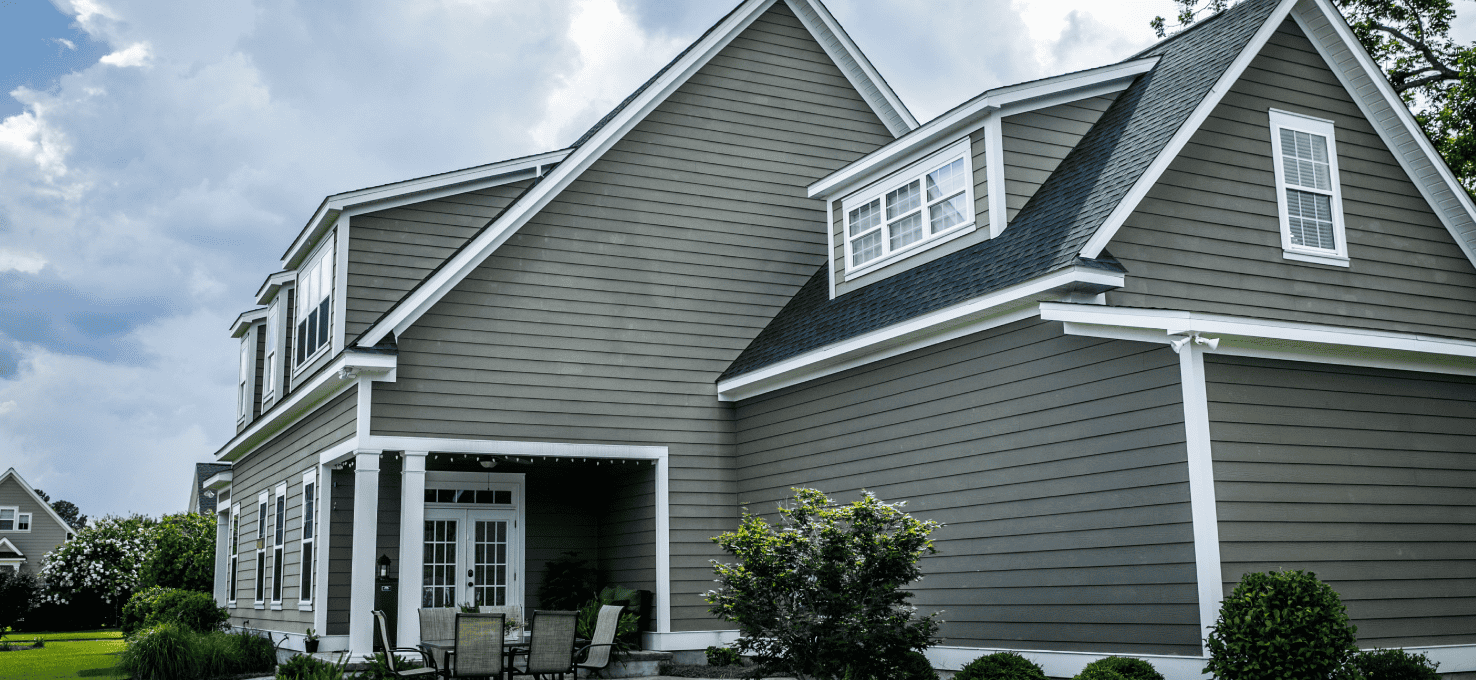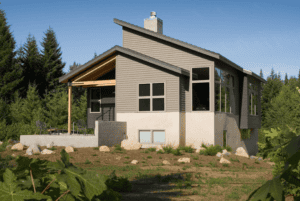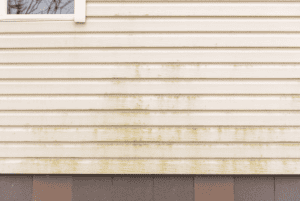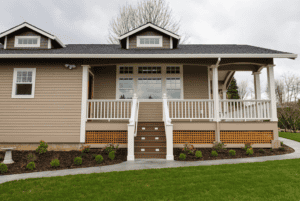
Exteriors
Signs It’s Time To Replace Your Home’s Siding
Your home’s siding acts as a shield against the elements, insulating it against cold and heat, inclement weather, debris, and pests. And it’s not just functional, siding plays a defining role in your home’s overall aesthetic, bringing character and curb appeal to its exterior.
So, when should you consider replacing your home’s siding? There are a few things to consider, from life expectancy to climate to physical damage.
Life Expectancy of Home Siding in the Pacific Northwest
 First, consider the material of your home’s siding and how long it has been in place. Below is the average life expectancy for the most common siding materials:
First, consider the material of your home’s siding and how long it has been in place. Below is the average life expectancy for the most common siding materials:
- Vinyl siding – Replaced every 10-20 years
- Aluminum siding – Replaced every 20-40 years
- Wood siding – Replaced every 20-40 years (depending on the type of wood)
- Fiber cement siding – Replaced every 50 years
Climate can also play a role in the longevity of your siding. Throughout Oregon and Washington, we experience harsh rain, wind, sun, and snow, depending on the season and the region. It’s also helpful to consider how long you’re planning to stay in your house. Fresh siding can increase your home’s curb appeal and resale value to potential buyers while protecting your home against the elements for years to come if you’re planning on staying put.
Indications That Your Home’s Siding Needs to Be Replaced
Take a look at your home from far away and then inspect the siding up close. Faulty siding doesn’t just affect the outside of your home, take some time to inspect the inside of your home as well. Keep reading for a list of signs it’s time for an upgrade.
1. Cracking, Warping, Rotting, or Bubbling
If you spot any superficial issues on your siding like cracking, warping, rotting, or bubbling, it’s a sure sign that your siding is damaged beyond repair. Even small cracks could point to a bigger problem lurking below the surface. Check beneath any cracked sections for rot and call a professional to investigate further.
Bubbling or blisters on the siding point to water trapped underneath the siding. Because siding is supposed to prevent water from entering the home, this is a clear sign that your siding isn’t doing its job anymore.
2. Fungus, Mold, and Mildew
 Fungus and mold thrive in moist environments, so if they are growing on your siding, it could indicate that water is penetrating your siding.
Fungus and mold thrive in moist environments, so if they are growing on your siding, it could indicate that water is penetrating your siding.
3. Faded Siding
When siding loses its color and becomes faded, it’s a sign that its weatherproofing is also fading. While this isn’t as urgent as rot or mold, faded siding is a good indication that you should consider upgrading before other serious problems occur.
4. An Unexplained Higher Energy Bill
If you’ve ruled out attic leaks, drafty windows, and insulation issues, your siding could be the culprit behind an unexplained high energy bill.
5. Paint Issues
If you find yourself needing to paint your siding frequently due to peeling or chipping, the problem could lie with the siding and not the paint itself. Eight to ten years is the standard timeframe for when most homes need a fresh coat of paint, so if you’re painting more frequently than that, take note. Additionally, peeling paint or wallpaper inside your home could be caused by moisture penetrating your siding and into the walls.
6. You’re Tired of the Style
If you’re itching for an exterior upgrade, replacing your home’s siding can provide the refresh you’re looking for. Selecting new siding can modernize your home’s exterior or match the home’s architectural style, breathing new life into your home and increasing its aesthetic appeal.
Further reading: What Happens During a Remodeling Consultation?
Durable Siding Replacement Options
 When it’s time to replace your home’s siding, Neil Kelly offers custom siding replacement services, as well as professional repairs and maintenance. We often suggest James Hardie siding, the leader in high-quality fiber cement siding, which is resistant to water, heat, and warping. Hardie was the inventor of modern fiber cement siding and offers options to fit almost any architectural style from wood-look and board-and-batten to contemporary and industrial options.
When it’s time to replace your home’s siding, Neil Kelly offers custom siding replacement services, as well as professional repairs and maintenance. We often suggest James Hardie siding, the leader in high-quality fiber cement siding, which is resistant to water, heat, and warping. Hardie was the inventor of modern fiber cement siding and offers options to fit almost any architectural style from wood-look and board-and-batten to contemporary and industrial options.
Neil Kelly also offers premium wood siding products for every style, taste, and application. Wood siding is classic, historic, and durable, and our experienced designers and craftspeople will ensure that the end result is both functional and timeless. When your siding is installed with Neil Kelly it’s backed by our 5-year workmanship warranty, so you can expect quality results and peace of mind for years to come.
Schedule a Home Remodeling Consultation With Neil Kelly
If you’re seeking expert advice on your home’s siding or have other exterior remodeling needs, Neil Kelly offers design/build remodeling services for homes across the Pacific Northwest. Visit our design centers in Portland, Seattle, Bend, and Eugene/Springfield.
Ready to get started? Schedule a consultation with Neil Kelly today.